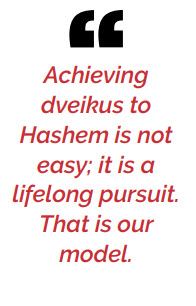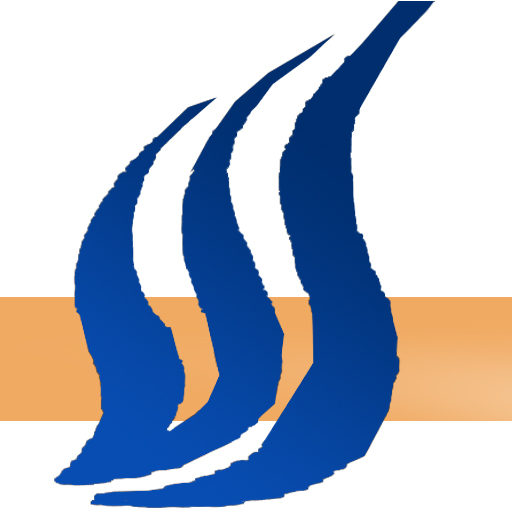Read the recent interview with our Rabbi in Hamodia’s Inyan magazine:
Print the article – In Conversation- 3 Tishrei 5780
Read the full article in the October issue, or on Hamodia.com in Tishrei
In Conversation with the Rav
By Yosef Gesser, Inyan Magazine
Please provide a bit of background information.
I was born and raised in Cleveland. I attended the Hebrew Academy of Cleveland from kindergarten through twelfth grade. Afterwards I learned in Telshe Yeshiva there for 10 years, five as a bachur and another five in kollel. Eventually I received Yoreh-Yoreh semichah there.
Who was/is the biggest influence in the Rav’s life?
The primary influences on me were, in this order, Harav Shlomo Mandel, shlita, Rosh Yeshivah at Yeshiva of Brooklyn, who was a maggid shiur in Telshe when I was in the yeshivah; lhbc”l, Harav Nosson Tzvi (Herschel) Baron, zt”l, who was a Rosh Mesivta at Hebrew Academy of Cleveland, and, ybl”c, Harav Shlomo Eisenberger, shlita, who served as Rosh Yeshivah at Telshe for 45 years.
Rav Mandel had great love for his talmidim. He took a personal interest in me — perhaps he saw some leadership potential in me. He really touched my soul. Rav Baron was also very caring towards me. He was very instrumental in influencing me to go to yeshivah (my parents had plans for me to attend college). Due to his insistence I went to Telshe.
Rav Eisenberger was maggid shiur for the first-year beis medrash talmidim when I entered Telshe. My intention was to stay for only one year. He shared a mashal with me that changed those plans and my life:
A Yid enters a sefarim store to purchase a siddur. The
salesman shows him a siddur. The customer says he needs
a bigger one — the biggest one in stock. A huge siddur is
wheeled in on a cart; he approves and is ready to pay for
it. The salesman asks him, “If you don’t mind my asking,
why do you need such a large siddur? He answers, “When
my grandchildren visit me, they will take the siddur and
rip out pages. With a small siddur, they will rip out all the
pages. If I have a large siddur, I will be left with at least
some pages, perhaps a Krias Shema or an Amidah.”
Rav Eisenberger looked at me and said, “Yossi, after you leave the yeshivah, the outside world will rip your siddur apart. You need to make sure your siddur has as many
pages as possible so that your ruchniyus stays intact.” I could not argue with this life-changing lesson; one year turned into ten years and my destiny was charted for me.
I have shared this mashal many times over the years with those under my influence about the imperative to continuously immerse oneself in Torah and absorb its message.
When did you arrive in Toronto?
I came here in 1984. I taught at the Eitz Chaim Schools for 11 years. During that time, I served as the director of the Toronto Jewish Network, coordinating chavrusa programs in various shuls in town. I was the principal of the ORAH School for Jewish Children from the Soviet Union for 14 years. I assumed the post of Mara d’Asra in our shul in 2004. It is noteworthy that Aish HaTorah was very instrumental in enabling our growth.
How is your shul unique/special?
Ours is a very cosmopolitan kehillah, ranging from nonobservant to “black-hatters,” who all get along wonderfully with one another. Yet we share a number of common goals:
- allowing everyone to grow at their own level and pace;
- creating a lashon hara-free environment — while we offer lots of ahavas chinam;
- creating an inspirational tefillah that includes much singing and zero tolerance for talking in shul;
- emphasizing great “kirvas Elokim li tov (closeness to Hashem is what’s good for me)”as Dovid Hamelech says in Tehillim;
- living with the ideals of Chassidus, although no one dresses Chassidish;
- Striving to excel at whatever we do, at its proper time. For example, when it is time to daven, we strive to daven well, when it is time to learn, we strive to learn well, and when it is time to socialize, we strive to do that in the most proper way.
A great deal of learning takes place in shul, with programs for all levels, from beginners on up, in areas such as Gemara, Halachah and parashas hashavua.
Over the years I have given shiurim in a vast array of sefarim — present and past topics include Nesivos Shalom, Eish Kodesh, Bilvavi Mishkan Evneh, and numerous other sifrei machshavah and sifrei Chassidus, and even light Kabbalah such as sefer Tomer Devorah.

Learning takes place every night of the week and on Shabbos, including a drashah I deliver after the Shabbos morning davening. In any given shiur I also cite a broad range of reputable sources. How many places can you hear insights from the Baal HaTanya, Harav Chaim Volozhiner and Harav Yosef Dov Soloveitchik in one shiur!
I have led shul trips to Eretz Yisrael. Yet we are realistic about what people can handle. We facilitate our no-talking-in-shul policy with a very short Kiddush break between Shacharis and leining. For those with a very limited background who find it hard to daven, there are a few classes that are offered during that time.
We also have a minyan that is shorter and does not include singing, for those who prefer it. There is also a Sephardic minyan. That started after we befriended a community of Indian Jews — whose authenticity as Jews was investigated by Harav Moshe Lowy, Rav of the Agudas Yisrael of Toronto and one of the senior Rabbanim here — and who conduct their own Sephardic minyan according to their mesorah every Shabbos on our premises, led by Rabbi Mordechai Sevy.
We have chessed projects such as one prior to the school year when we raise funds for school supplies for families who are struggling; that is a significant expense they have to deal with on top of tuition.
I wish to mention my wife, Rebbetzin Gail, who partners with me in all that I do, and whose classes and talks are very well received in shul and around the community.
Harav Moshe Lowy said to me that the reason our shul does not have a greater number of members or amount of space is because of the abundant kedushah that exists in our
shul!
Please elaborate on the goal you stated of living with
the ideals of Chassidus.
During my yeshivah years I developed an interest in Chassidishe sefarim. I share their teachings in my shiurim and drashos. That furthers the goal of living  with the perspective of “Kirvas Elokim li tov,” which incidentally is found on the aron hakodesh in our shul.
with the perspective of “Kirvas Elokim li tov,” which incidentally is found on the aron hakodesh in our shul.
The aron in many shuls have a passuk such as “Shevisi Hashem l’negdi samid” and the like, but I know of no other shul that has that passuk. Achieving dveikus to Hashem is not easy; it is a lifelong pursuit. That is our model and I always emphasize these ideas.
Another way we internalize this message of Chassidus and kirvas Elokim is through singing, such as at our spirited Kabbalas Shabbos, during Hallel, shalosh seudos, kumzitzes and on other occasions.
What in your opinion is the most important trait a
Rav should possess?
The Rav must be continuously seeking to grow himself, and it should be evident to his kehillah. He thereby serves as a role model for them. What is the biggest challenge in running or leading a shul?
One challenge is trying to speak in a way that touches and inspires an entire, diverse kehillah. A second is refraining from giving up on the minority of members who are not growing in their Yiddishkeit. A third is constantly coming up with new initiatives and adapting to an ever-changing climate in the kehillah.
My mispallelim know that I mean business, and we do maintain a high standard of Yiddishkeit here. Of course one has to temper the message according to the generation and the group one is working with. I speak a lot about Gedolei Yisrael, whose greatness is obviously much beyond our capabilities. Yet I tell them that hearing these stories is valuable because they inspire us to desire to identify with them, to at least want to be “on the same team.”
Finally, it is a challenge to hold onto the baalei teshuvah, who mistakenly think they have to leave the shul where they started out being observant — that there is a stigma attached to them if they remain here and enter into the “mainstream.”
Many baalei teshuvah somehow feel that when they move on to a shul that they deem is more mainstream, they “have arrived.” I tell them, “You never ‘arrive.’ You keep on growing. I myself have not ‘arrived’! One ‘arrives’ after 120 years! Unfortunately, some of the places to which they gravitate are not as medakdek in mitzvos or as inspiring as our shul, which unfortunately causes some who make the move to decline in their level of Yiddishkeit. Here, they never talked in shul and now they do because their new shul does not restrict it as ours does.
Any meaningful memories you can share about your
years in harbotzas Torah?
I cannot point to any particular recollection. My wife and I live with the awareness and have tremendous hakaras hatov that Hashem has blessed our family that all our children have stayed frum and merited the best shidduchim. This, despite having lived among and worked with baalei teshuvah most of our lives, not as part of the “mainstream”! Numerous families whom we have brought closer to Torah have progressed in their Yiddishkeit and have transmitted the mesorah to their children, who have built admirable Torah homes.
Early in my career in harbotzas Torah I had absolutely no plans to become a Rav of a shul, but hashgachah willed it otherwise. It has been a very pleasant experience, one that has afforded my wife and me tremendous growth. Thank you, Rabbi Michalowicz. We wish you much continued hatzlachah in your avodas hakodesh.
